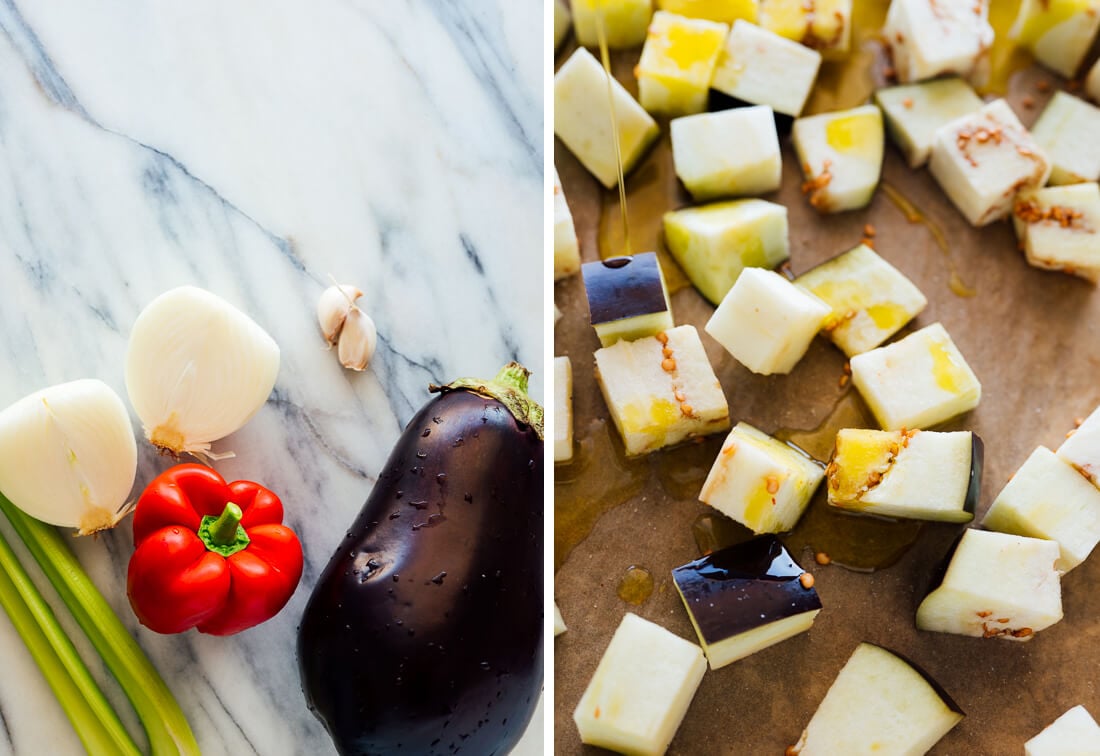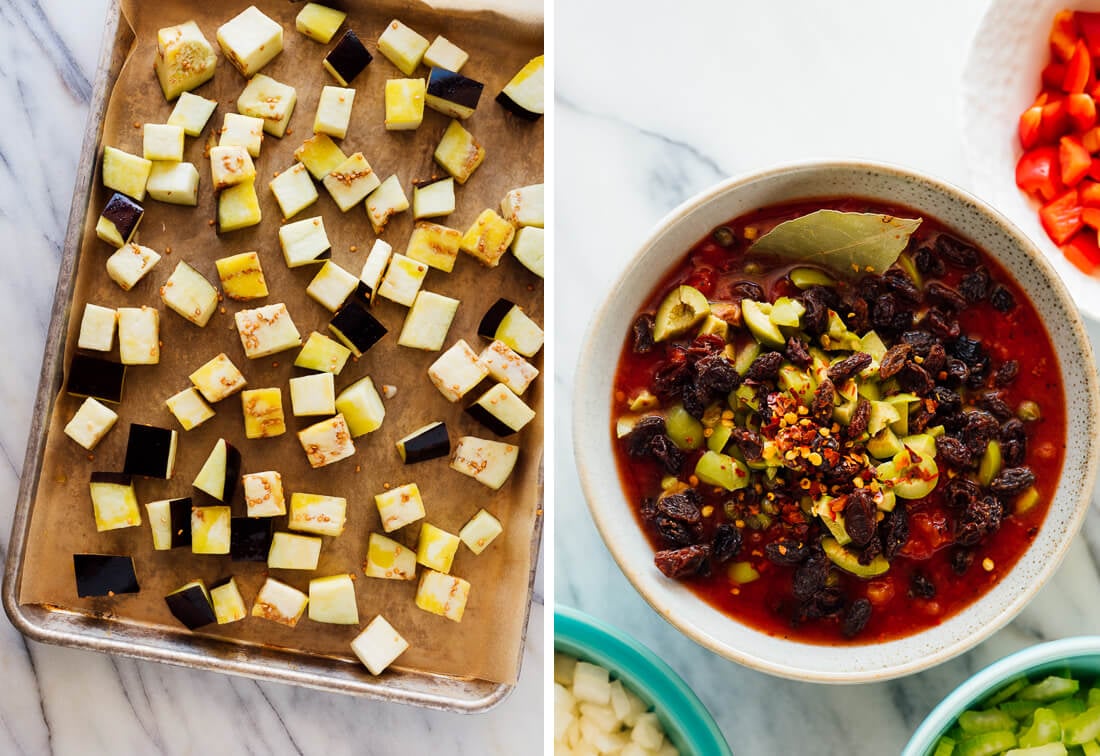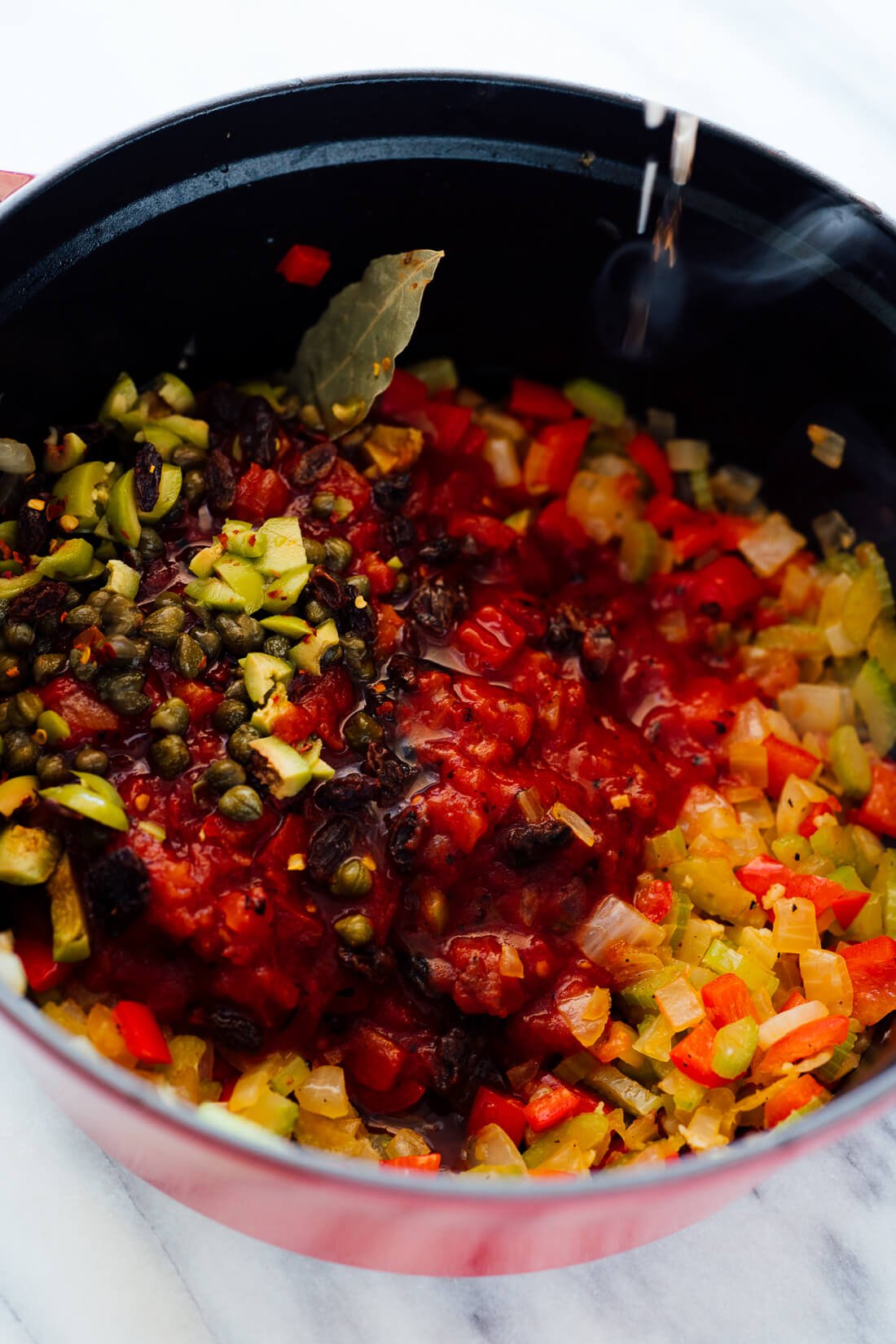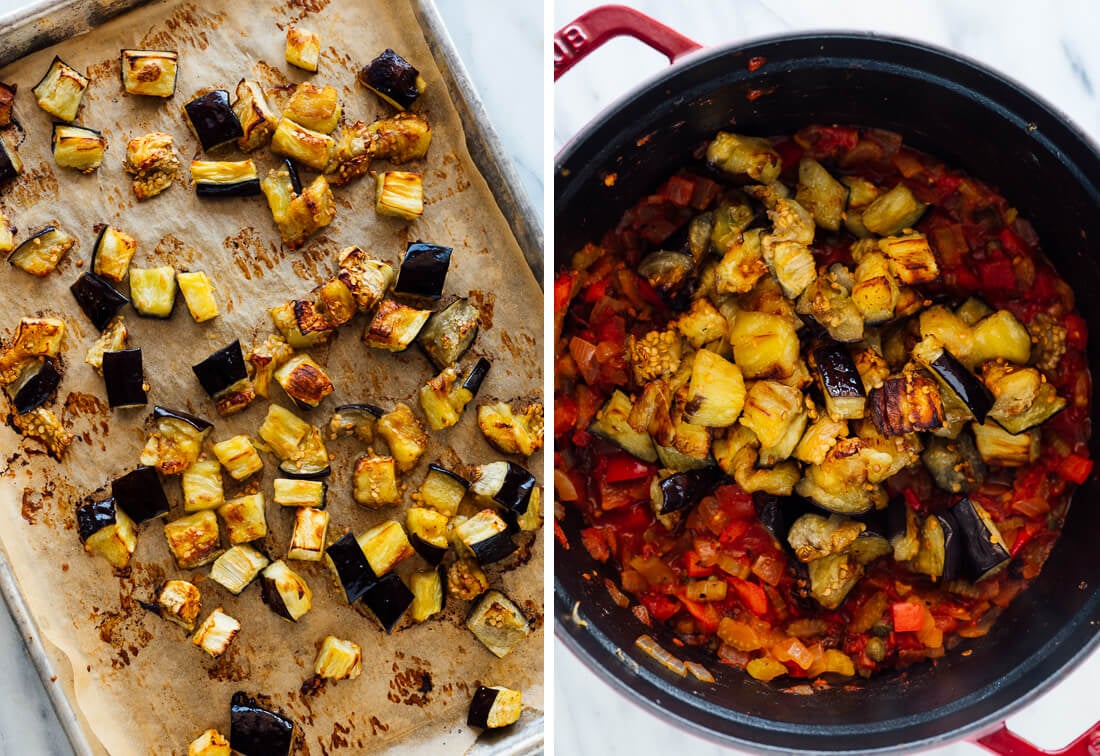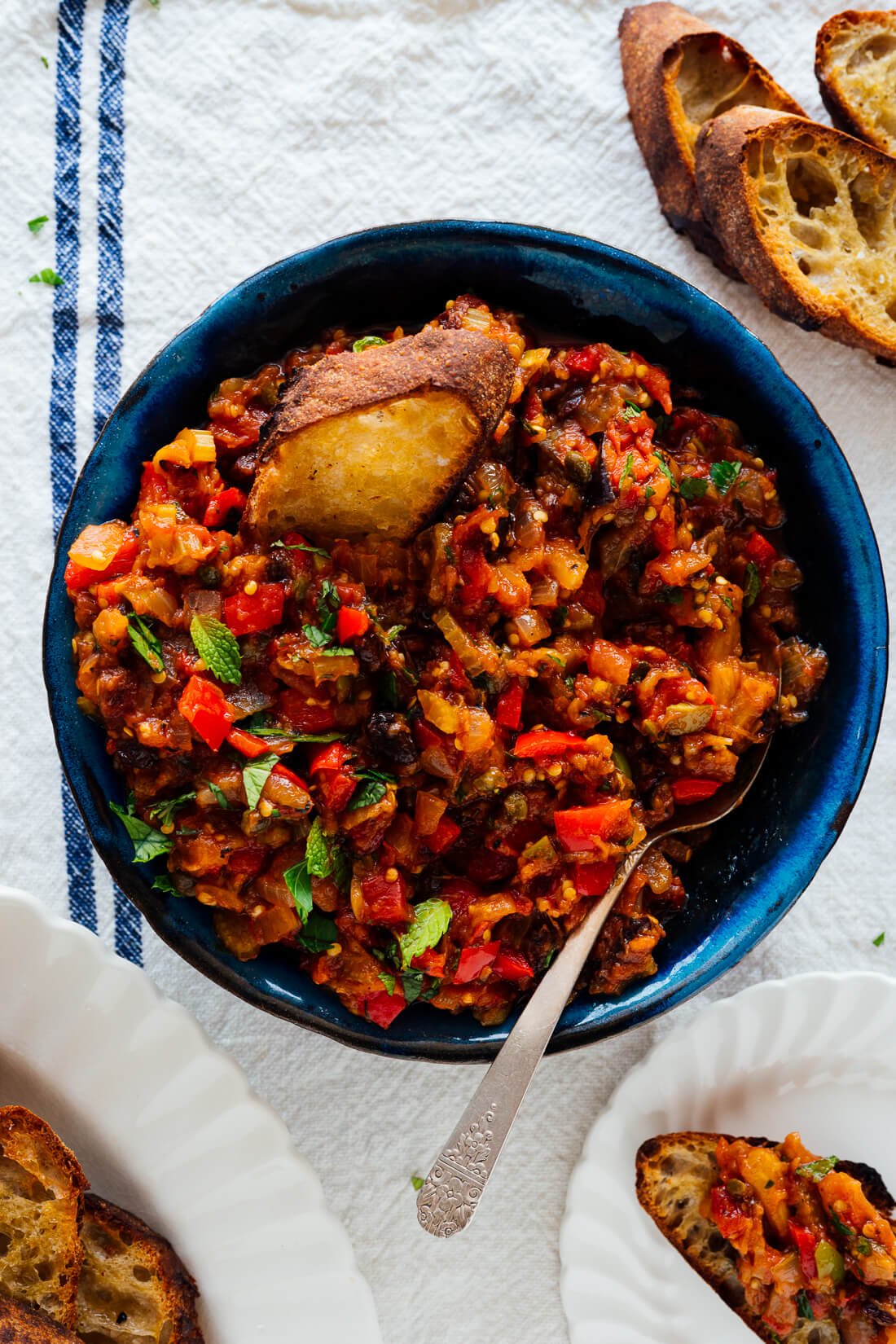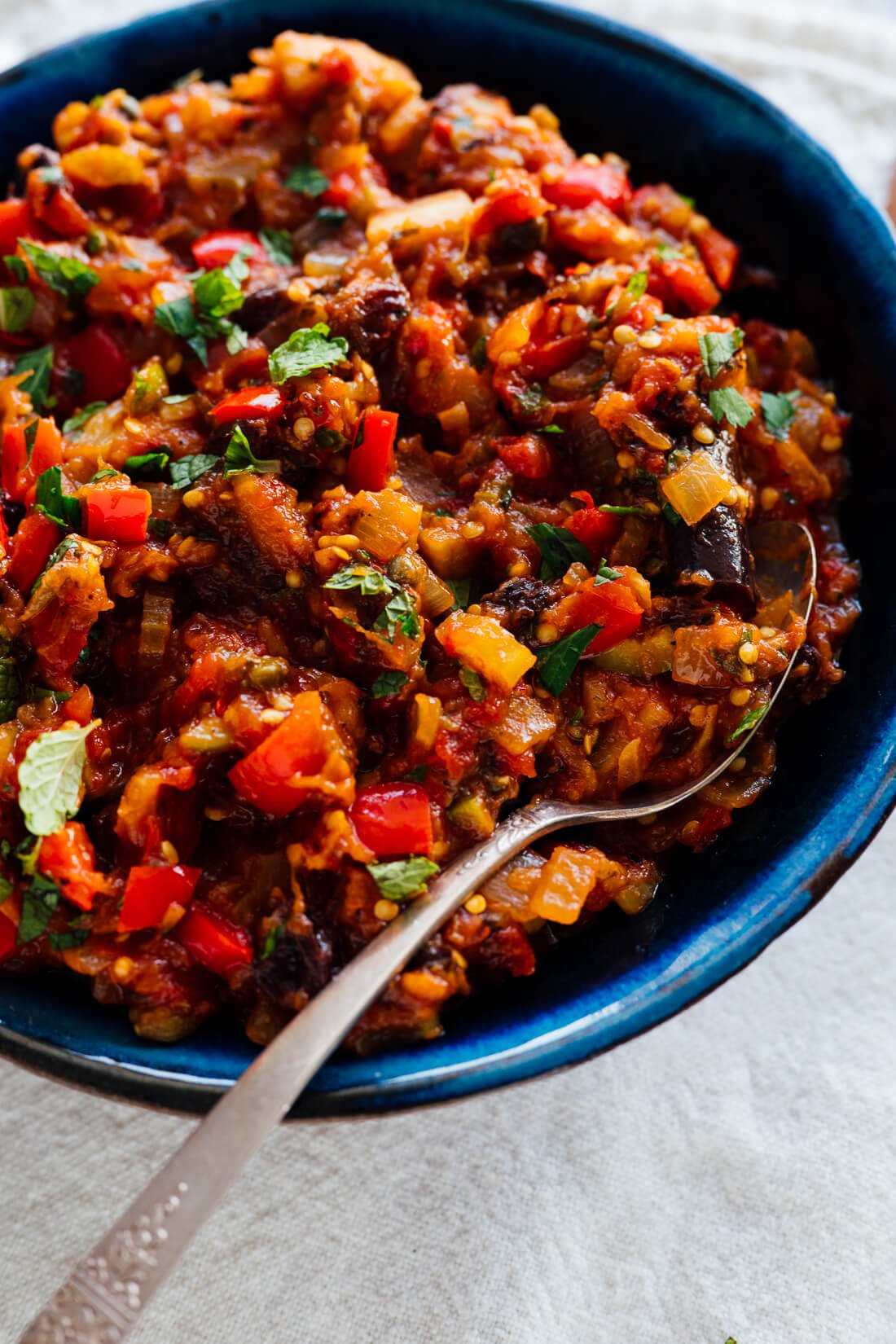Let’s make homemade caponata! This classic Sicilian appetizer or side dish is perfect for late summer meals. This recipe combines roasted (not fried) eggplant with sautéed bell pepper, celery, tomatoes, olives and capers. Red wine vinegar and honey make it irresistibly tangy and sweet. If you generally enjoy these bold flavors, you’re going to love caponata. Since international travel is largely off the table, I’ve been traveling vicariously through my food. This caponata is the perfect example. I’ve yet to make my way to Sicily to sample authentic caponata, but learning to make this dish has deepened my desire to explore the island. Mark my words, I’ll get there someday.
Caponata recipes vary from region to region and household to household. This recipe is where I landed. I took some cooking cues from my ratatouille recipe, which also features roasted eggplant stirred into a simmering tomato sauce. Caponata’s flavors are even deeper and more complex largely due to the intense agrodolce factor, or the interplay between sweet (honey and raisins) and sour (vinegar and capers). I can’t claim this recipe is entirely authentic, but I hope it offers you a little taste of Sicily.
How to Serve Caponata
Caponata is a fun and versatile dish whether you serve it as an appetizer, a side dish or a light meal. Traditionally, caponata was served alongside fish or meat dishes. Caponata offers bold, lively flavors that will complement grilled entrées and late summer feasts, and it packs well for picnics. Caponata is a great make-ahead dish. To give the flavors time to mingle, let it chill in the fridge for a couple of hours or ideally, a full day. I prefer my caponata warmed or at room temperature, but some enjoy it cold. I believe caponata would freeze well for later if you’d like to preserve a taste of late summer. Bottom line—do as you please!
Watch How to Make Caponata
Wondering what to eat with caponata? Here are some suggestions:
Crostini offers the perfect base for caponata since it’s crisp and sturdy (pita chips or crackers would work in a pinch) Cheese plates Olives or Torn Olives with Almonds, Celery & Parmesan Raw tomato and herb-based salads, like Caprese Salad, Easy Tomato Salad, Panzanella or even Fattoush Moving further from convention, caponata goes well with improvised meals of pasta, eggs or sandwiches
Some Brief Caponata History
For context, Sicily is the largest island in the Mediterranean Sea, located just south of Italy. Over many centuries, Sicily was invaded by the Phoenicians, Greeks, Romans, Arabs, Normans (French) and Spaniards. Each culture left a mark on Sicilian cuisine. In my research, I’ve learned that caponata is as diverse as the history of Sicily. Caponata inherited eggplant and its sweet and sour (agrodolce) flavor from the Arabs, olives from the Greeks, and tomatoes from Italy (or are they from Spanish aristocrats?). The recipe seems to have drawn inspiration from vegetable dishes of Spain (pisto manchego) and France (ratatouille) as well. Even the roots of the name caponata are highly debated.
Recommended Reading on Caponata & Sicilian Cuisine
A History of the Sicilian Caponata by Clifford A. Wright Eating the Arab Roots of Sicilian Cuisine by Adam Leith Gollner Eggplant Caponata: History of a Traditional Dish by Brunella Farina Caponata, a mosaic of foods from Sicily by Bill St. John The Medieval Beginnings of Sicilian Cuisine by Clifford A. Wright
How to Make Caponata
You’ll find the full recipe below, but here’s the gist:
More Eggplant Recipes to Enjoy
Baba Ganoush Eggplant Parmesan Mediterranean Quinoa Salad with Roasted Summer Vegetables Ratatouille Roasted Eggplant & Tomato Orzo Pasta
As always, please let me know how you like your caponata in the comments! I love hearing from you.
Make it vegan: Substitute sugar for the honey. Make it gluten free: This dish is gluten free, as long as you serve it with gluten-free accompaniments.


